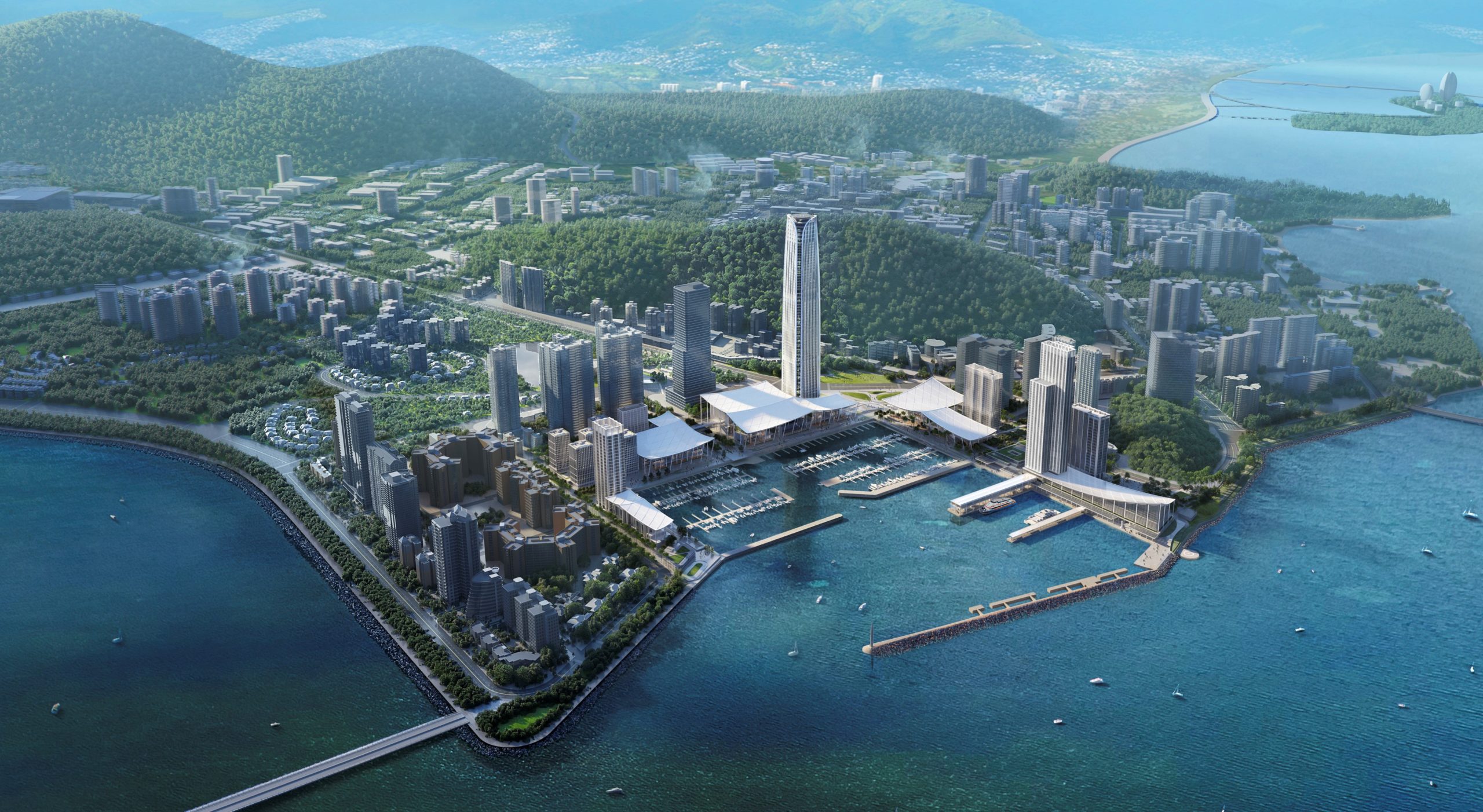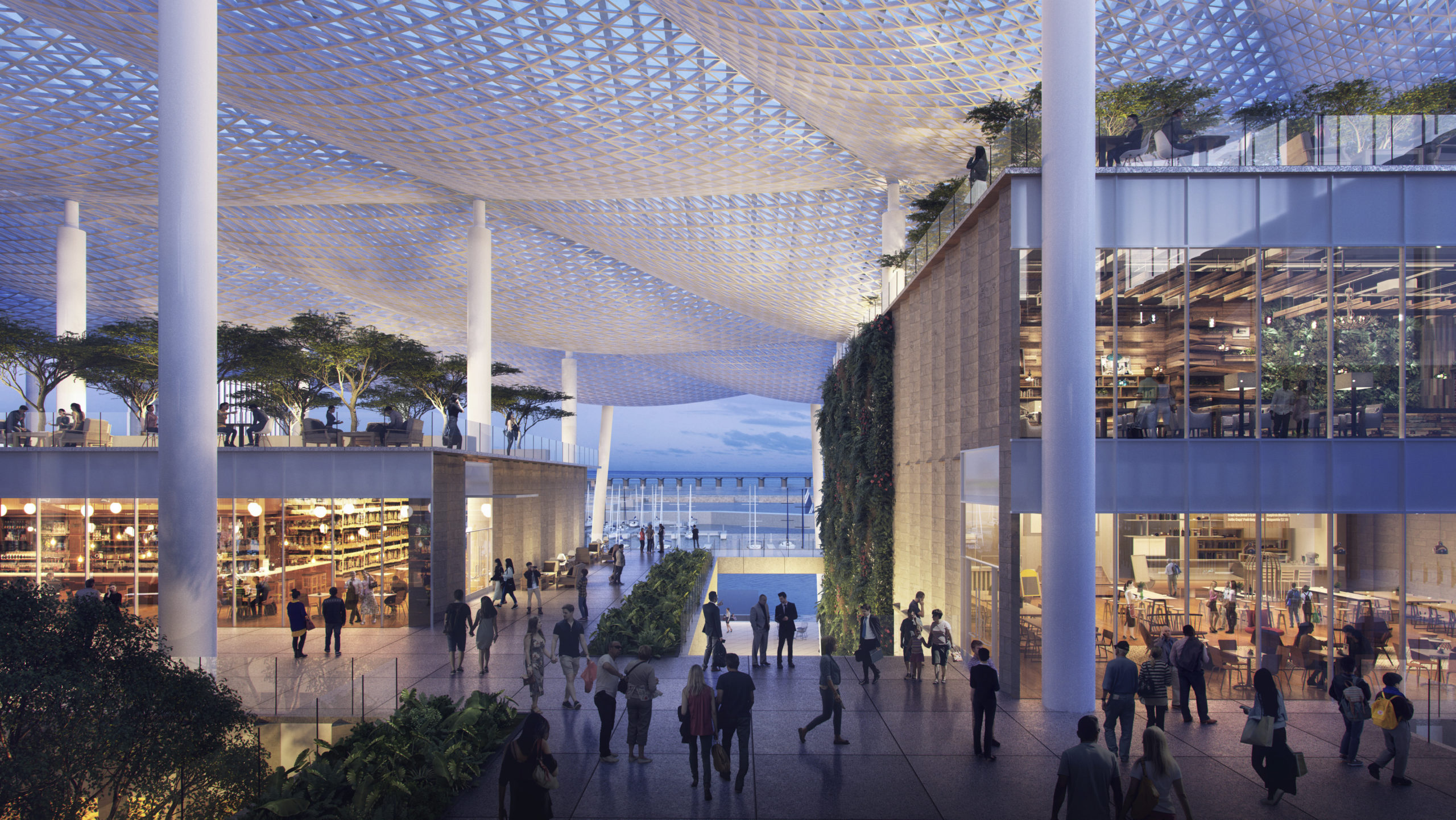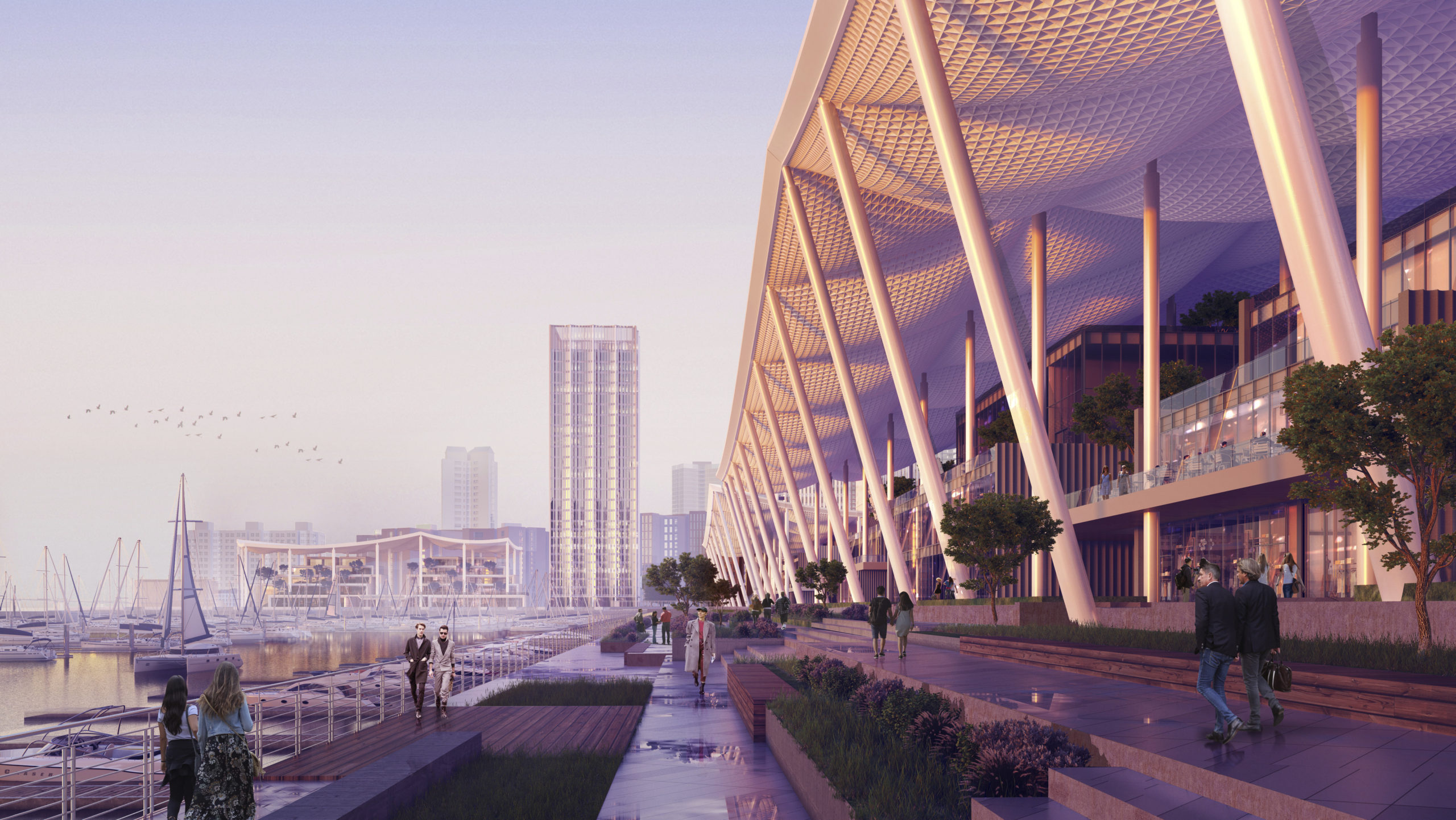
Zhuhai’s maritime history inspires mega waterfront development
Described as the most liveable city in China, Zhuhai was recently connected to Hong Kong and Macau by the longest sea-crossing bridge in the world. Now it’s about to get a brand new 52-hectare neighbourhood, Jiuzhou Bay, inspired by the city’s maritime history.
In an effort to transform the booming tech city’s waterfront, Skidmore, Owings & Merrill (SOM) was selected from a shortlist of 10 global design firms to create the mega, mixed-use development that features offices, residences, retail and transport infrastructure.

The ambitious design features five modular canopies that envelop three sides of a 167,000 sq m port, weaving together a landscape of towers rising behind it and creating a series of covered pedestrian alleyways, a lively retail environment, and interlinked courtyards along the waterfront promenade.
“The forms of the canopies are inspired by the local legend of the Fisher Girl and reflect the fishing nets commonly seen on the coastline throughout the region,” says SOM Design Director Sean Ragasa. “We wanted our design to resonate with the culture and history of Zhuhai, and to evoke a story that’s familiar to everyone who lives there.”

Complementing the site’s maritime heritage is a 318 metre-high tower that rises in the heart of the neighborhood, creating a recognizable structure with a design inspired by the form of a lighthouse Fresnel lens. The tower comprises 35 floors of office space topped by a 20-storey Ritz-Carlton Hotel complete with a skybar and observation deck. Sean says the tower will be diagonally bisected by an axis that appears to peel open the facade, revealing a vertical atrium that offers visitors breathtaking views of the bay.

The new neighborhood is also designed to utilize Zhuhai’s most abundant natural resources—the sea and sun—to reduce natural gas consumption, conserve water and create a comfortable environment for residents, office workers, shoppers, and nightlife seekers, helping to activate the site both day and night. The canopies also increase interior comfort and building efficiency by filtering daylight, harvesting energy via photovoltaic panels, and capturing rainwater.
SOM has designed a number of mixed-use projects globally, including Guoco Tower in Singapore, One World Trade Center in New York and Burj Khalifa in Dubai.